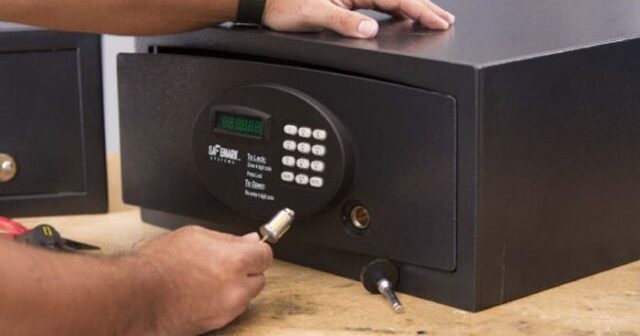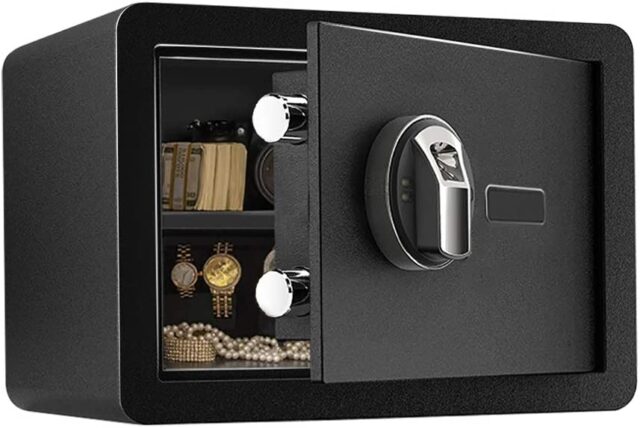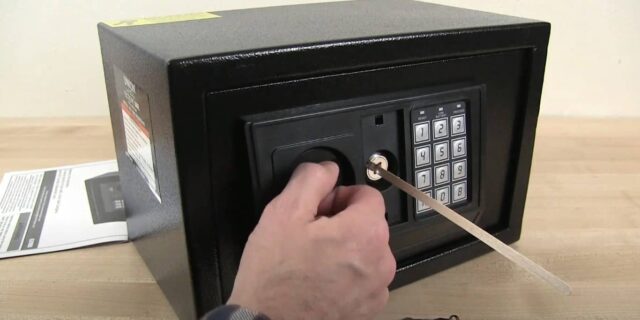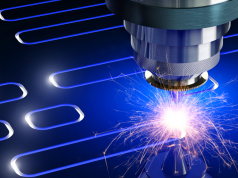
Safes or lockers for expensive items like jewelry and cash have been used for a long time.
The earliest safes used typical lock-based opening systems, then came the era of digital safes, and at present, we have the most advanced version, the biometric safes.
Biometrics uses unique human biological characteristics to provide an individual with a unique identity that helps him unlock safes, gain access to records etc.
The Great Utility Of Biometric Safes

Of late biometric lockers have become immensely popular. They are extremely safe, as a safe that recognizes a person’s iris is almost impossible to hack.
Moreover, with biometrics, you do not have to undertake the trouble of remembering multiple passwords; all you have to do is scan your iris or your fingerprint and unlock the lock.
The biometric verification is quick, and some of these locks can be unlocked in a matter of just a few seconds.
There are different types of biometric verification, so if you are not comfortable with an iris or a retina scan, you can easily opt for a scanning system that scans for other parameters like fingerprint recognition.
So if you too want to invest in a biometric safe to keep your valuables secure, you can search online for various companies offering these biometric safes for sale.
Things That You Should Know About The Battery Of Your Biometric Safe

The Early Signs That Your Battery Is About To Die
It is always a good idea to be prepared when your battery is about to die rather than suddenly discovering that it is dead. Most of the time, there are telltale signs that imply that the battery is about to run out very soon.
If the locker beeps for very long before recognizing the input code(the fingerprint or the retina scan ), that might be a sign that the battery is about to die.
Again some expensive safes come with a small digital display that can display the status of your battery. Even if you do not have a digital display, a battery, on average, runs for two years with moderate levels of use; however, if the locker is left untouched for many days, the battery may corrode and die out before two years.
So depending on the way you use your locker, you can get an idea of how frequently you should recharge or replace the battery of your biometric safe.
Is There A Possibility Of The Biometric Safe Being Permanently Locked
Many people fear that a biometric locker whose battery has died will be locked permanently, and they will not be able to get access to their valuables. However, that is not the case because safe manufacturers use a non-volatile technology to store the information about your unique identity(fingerprints, iris scans).
A non-volatile source of power differs from a volatile source like the RAM or the random access memory of a computer because it can store data even in the absence of an active and continuous power supply, that is, even when the battery dies out.
A non-volatile store of data can be of two types: electronic and mechanical (or magnetic). The electronic one uses electricity to store and retrieve data. The mechanical one uses a magnetic tip or pen to write the information.
These non-volatile sources of storing data are much like the memory chips that are often used in mobile phones. Most manufacturers use a combination of volatile and non-volatile sources of memory for a system, because of which they have a specific advantage.
RAM is fast, and the data stored on the RAM can be retrieved very easily. However, non-volatile sources of memory are of great use when there is a power shutdown or when the battery dies down suddenly. Also, non-volatile sources of power are more cost-effective; hence they increase the overall cost-effectiveness of the system.
A Mechanism That Can Recharge From The Outside

Some biometric lockers come with an internal battery, while others have a system where there is a battery placed in a holder outside the safe. If you have the battery in an external holder, then you can easily recharge it or replace it with a new battery.
However, it is always a good idea to go for a safe with an internal battery rather than an external one. This is because, with an external battery setup, any person can remove the battery and thus make your safe unusable at their will. But when the source of power is inside the locker, then you are protected from power-related attacks by miscreants.
Most internal batteries come with an external USB port, much like the chargers of your mobile phones. Every time the battery is low or runs out of power, you can easily attach the USB port and recharge the power source placed inside the biometric safe.
Some biometric safes also come with an external pad near the keypad where you can place a recharged battery to charge up the system. Most of these pads use an inductive charging method where an electromagnetic wave is used to charge the system without physically touching it.
Conclusion
A biometric locker is very safe as compared to a traditional locker because it is almost impossible to replicate a person’s fingerprint, his iris scan or his retina scan. These safes are also easy to use and maintain.
Moreover, you do not have to worry about the locker being permanently locked if the power source dies out because these systems can store and retrieve data even without an active power supply.
Biometric lockers are more expensive than traditional lockers, but in the long run, they are worth the investment if you have expensive items like jewelry or important documents that you want to keep safe.
The biometric lockers ensure that you can rest assured about the safety of your products. Also, you do not have to worry about remembering multiple passwords and taking care of multiple keys, as in the case of key-based or digital locks.












